The state of Valorant in 2022: An unstoppable machine
Valorant is like a bullet train of content and players are enjoying the ride.
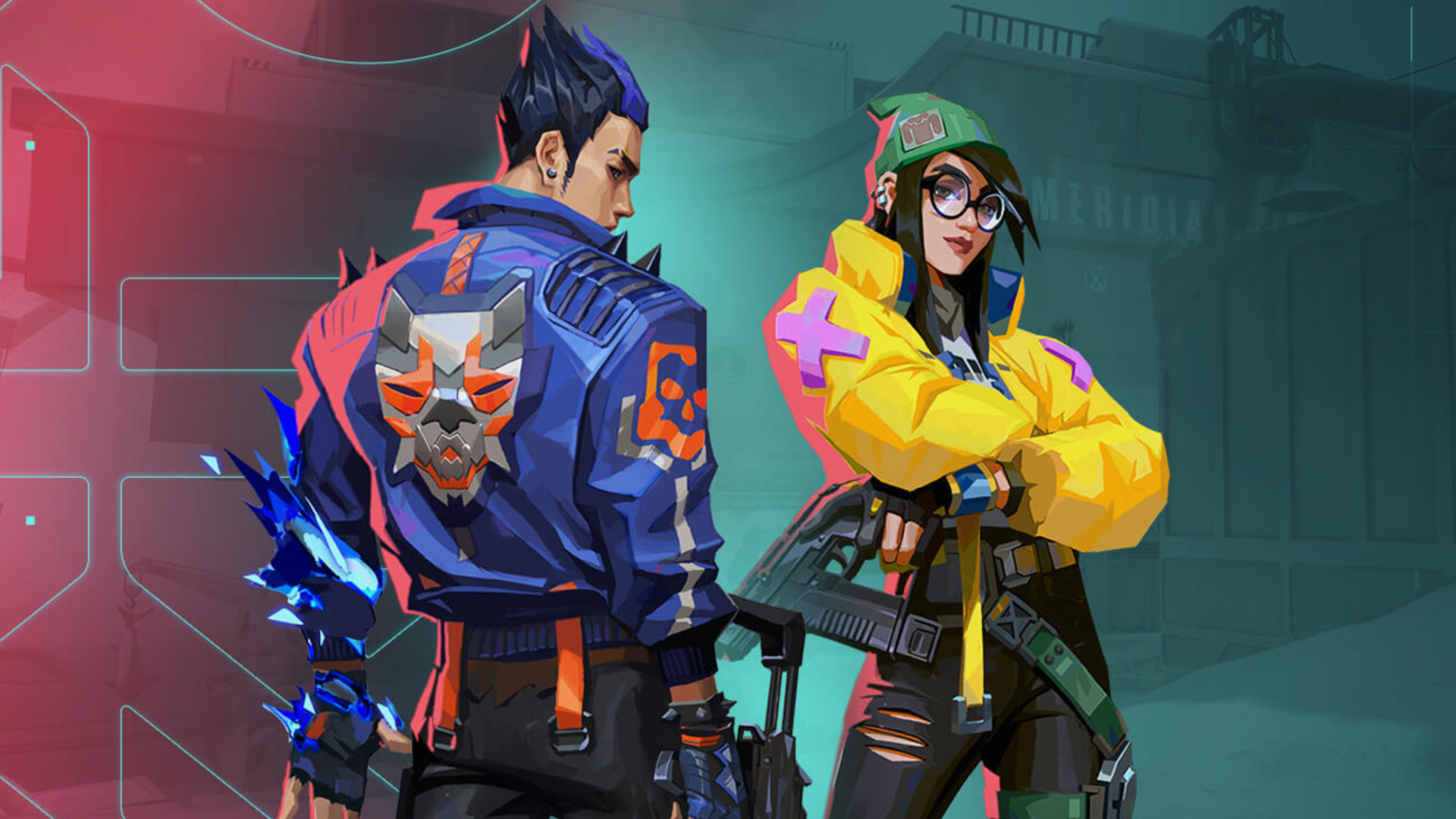
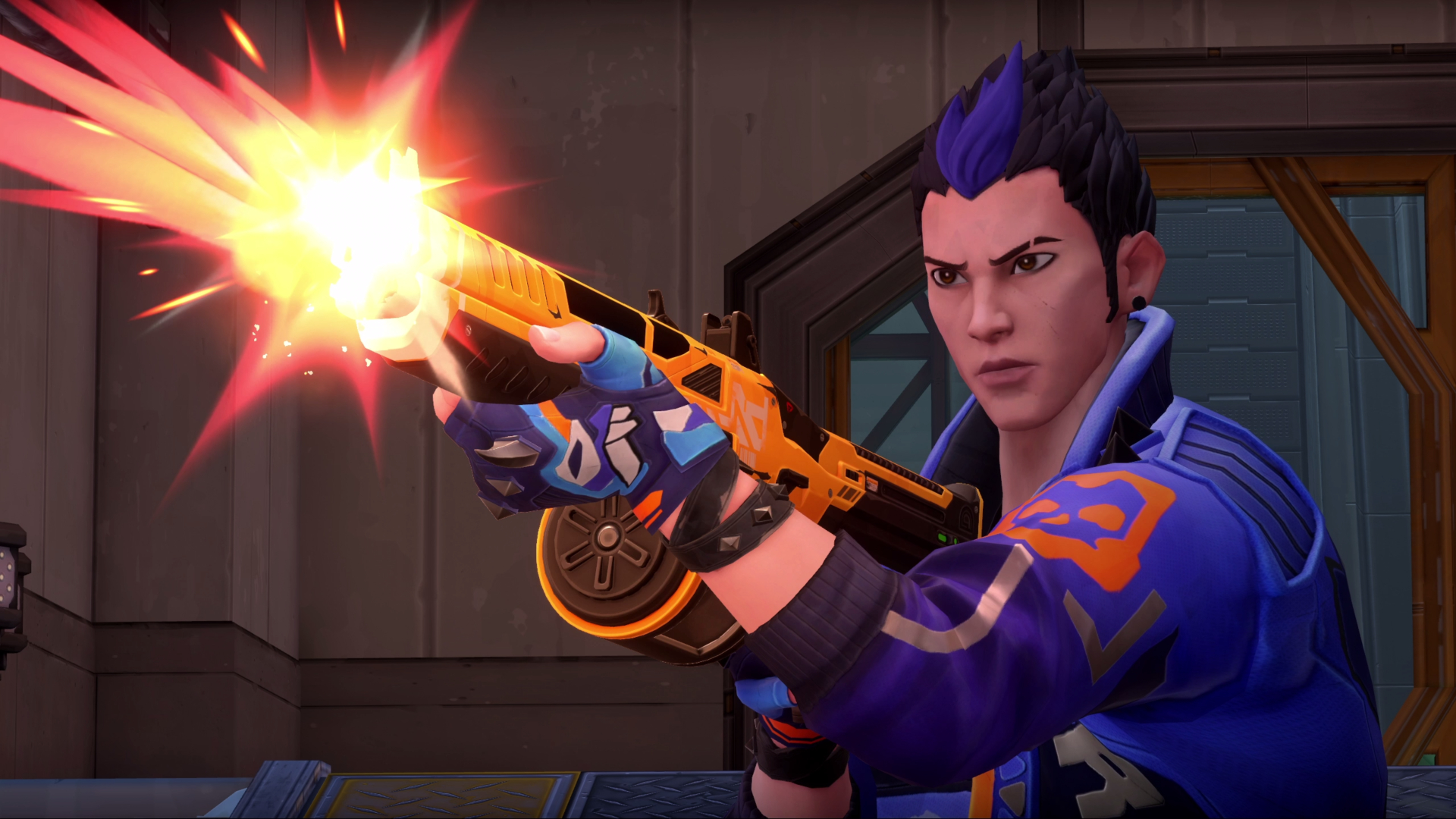
Across early 2022, we've been taking a look at the major games, genres and platforms that make PC gaming to see where they're at this year.
Valorant has been an undeniable success. Though it might not be the hottest topic in common gaming conversations, its esports scene is thriving and the community continues to grow. I've recently ended up on Valorant Tiktok and there are even specific influencers for the scene, sharing their Viper line ups, toxic experiences with other players, hilarious fails, and triumphant aces. The community in and around Valorant is alive and well, and it seems that all is going to plan, huh Riot?
Valorant came out as an obvious riff on Counter Strike mechanics mixed with a hearty helping of Overwatch's cartoony heroes. An inviting aesthetic meets brutal time-to-kill shootouts; a successful cocktail now almost two years on from its full release, with more maps, more agents, and an exciting esports scene.
Admittedly not everything is fine and dandy with the game. Though gunplay was pitched as the great equaliser by Riot, the abilities of agents skew results and maps are noticeably loved or hated. Jett was overpowered from day one as the must-play Duelist, and it took almost two years to go through a significant nerf to try and combat that. Astra's pick rate became awful after a heavy nerf and Chamber is going through a similar fate. Queues for competition revolve around who wants to dodge the map Breeze or if your agent of choice is already taken. There are still design issues that make the game a little frustrating.
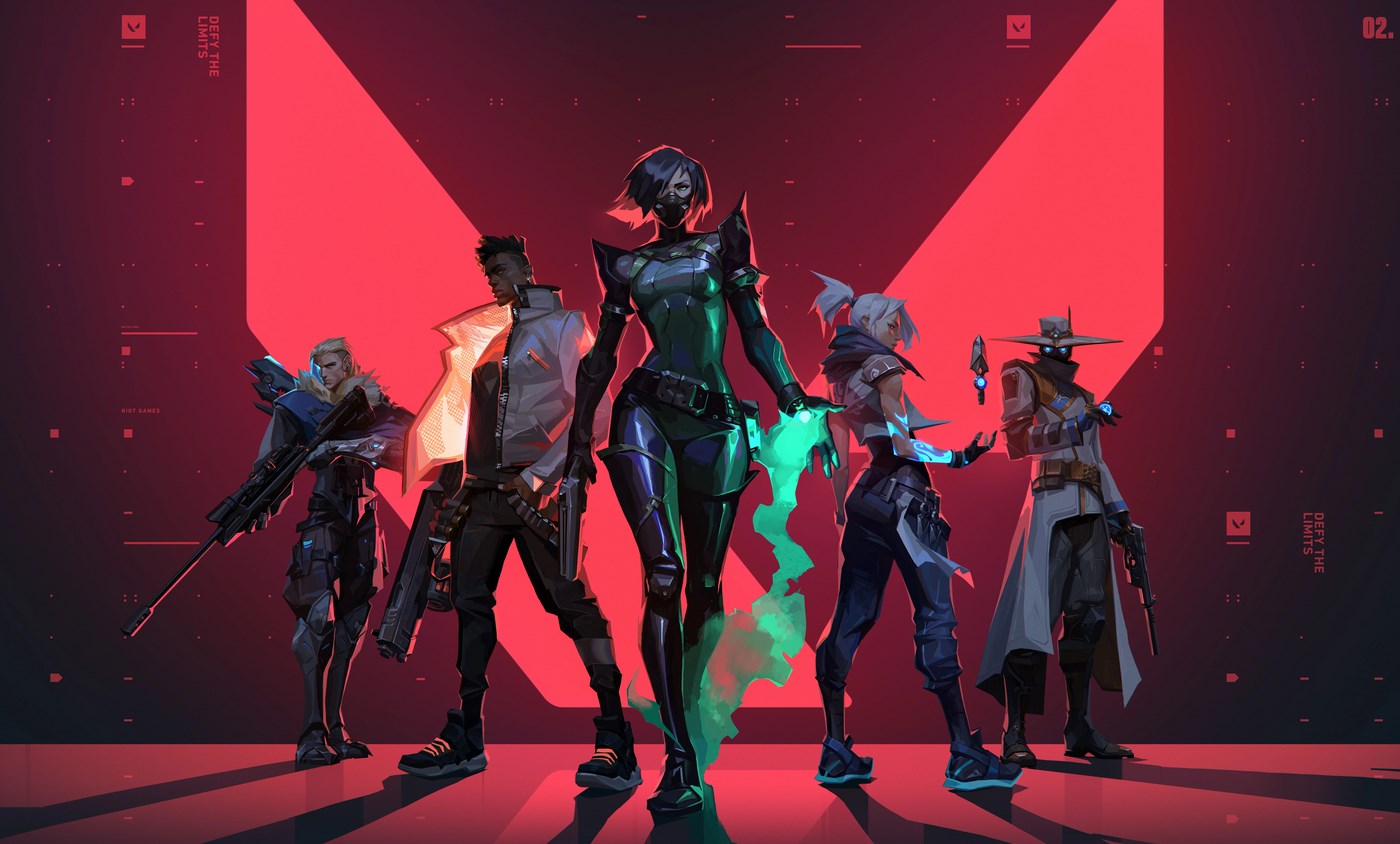
The reason Valorant has attracted and importantly kept so many players is because of Riot's quick turn around with changes, with regular map updates, bug fixes, and so many agent additions it could make your head spin. There is a constant flow of content. The game now has double the agents it had at launch which is impressive if not intimidating. And as dreamy as that sounds, it can get a little nightmarish. What a Valorant player actually thinks about the game can change drastically depending on the season and recent updates. If you spent a lot of time playing Valorant six months ago, took a break, and came back to it, the meta would be unrecognisable. And that means your main agent could be left in the dust.
Valorant's Agents
Phoenix, a good duelist at launch, has become close to obsolete. His abilities are entirely undermined by the presence of other characters. Even his ultimate feels unintimidating. Why use Phoenix's flash when you could have Reyna's or Kay-O's? Why use his fire wall when you could have a Viper or Neon? He's left behind by the strengths of other agents that have since been released and that's an issue with the roster's quick expansion. Players love Phoenix as a character so it's genuinely frustrating that he's an unviable competitive pick. So does Valorant have a problem of too much agent choice already?
John Goscicki, a senior character producer on Valorant, spoke to me about Valorant's roster and its growth. "I do think that there is an upper limit [of agents]. And I do think that it is, you know, even smaller than League of Legends' current roster size. At the moment, we are not running out of ideas and ways to expand the roster in the design space. But we're kind of constantly asking ourselves that, you know, do we adjust the release cadence once we start getting towards that upper cap? Do we start taking a look back at some older characters more intensively and like to revisit them and sharpen them and think about them in new ways? So you know, I'll say yes [there is an upper limit], but not anytime soon."
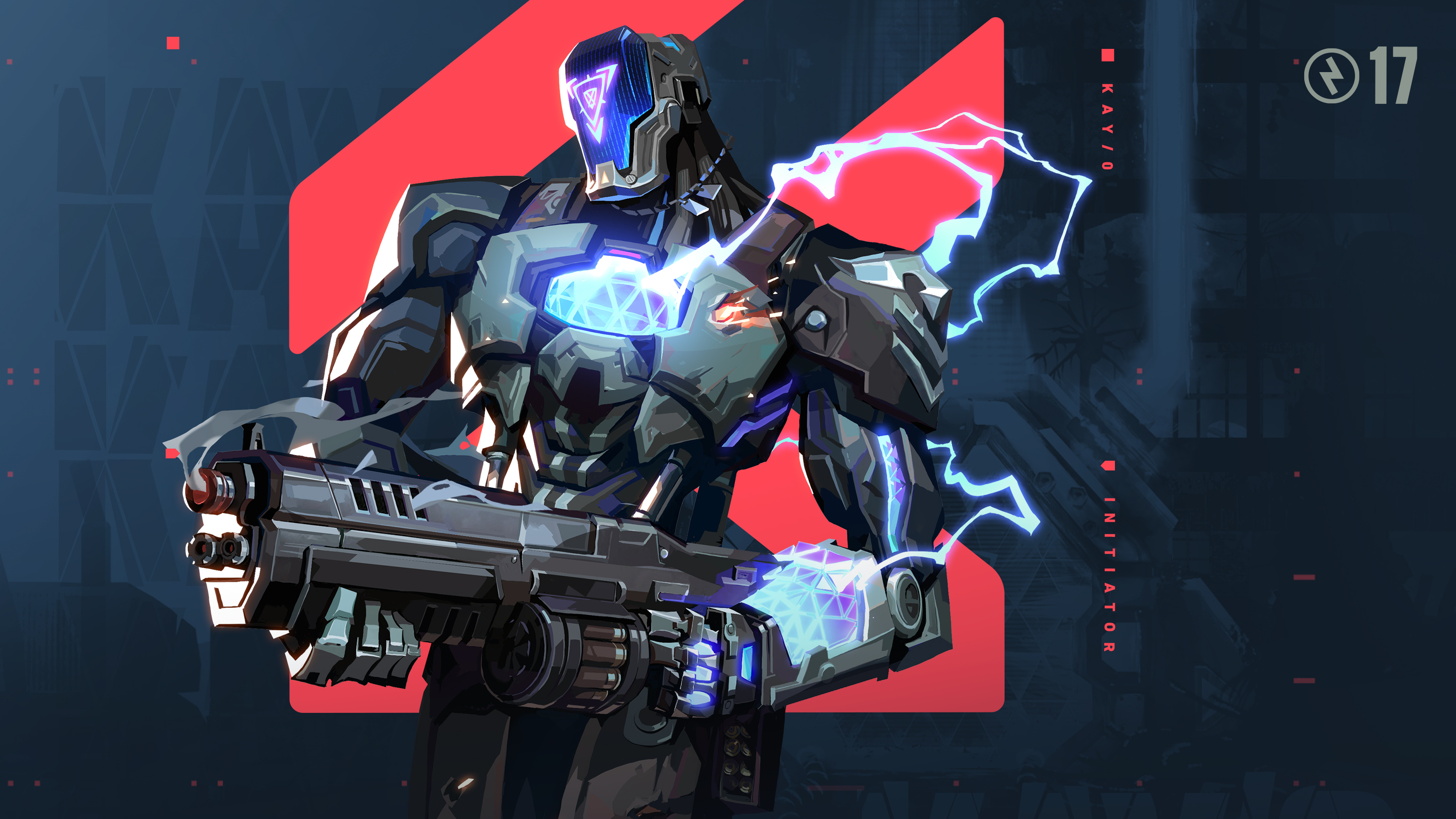
The agent issues feel like a small price to pay, however, as they're nerfed and buffed at such a rate that the meta doesn't stay stagnant for long. As the game is primarily about gunplay, it's historically more likely that the players will discover an overpowered use for a shotgun rather than an issue with the agents themselves. It's a constant turnover of stats, pick rates, and economic decisions which underpin the competitive scene.
The biggest gaming news, reviews and hardware deals
Keep up to date with the most important stories and the best deals, as picked by the PC Gamer team.
Valorant has a thriving casual community too though. Outside of the esport there is a massive TikTok, Twitch, and YouTube presence of the game, where people share theories about the agents, leaks, meticulously placed lineups, and more. Even the reveals of the skins are coveted and in turn hunted down at the end of the round as if players were eager shoppers in a Black Friday sale.
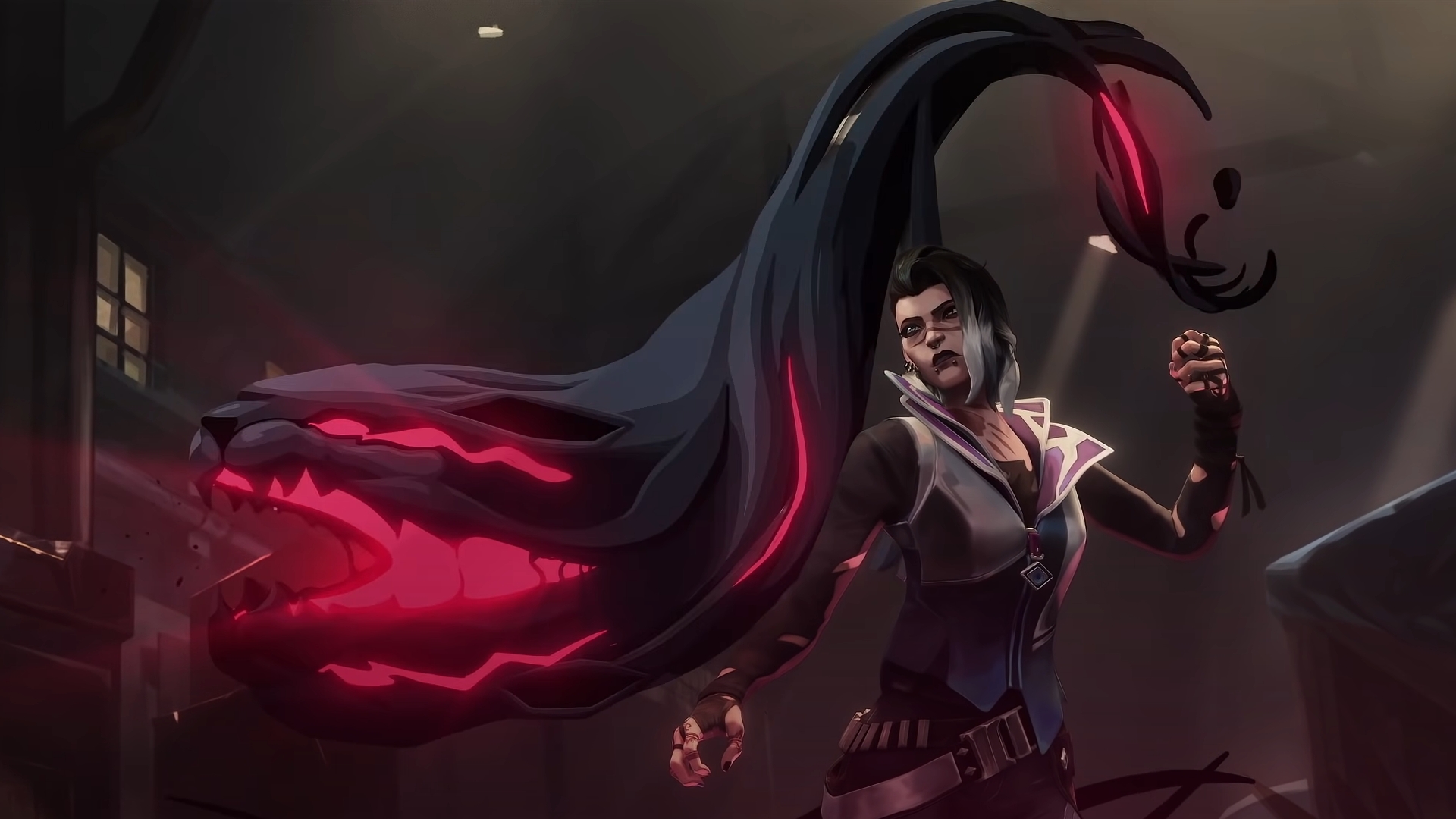
Monetisation and skins
Valorant's main monetisation continues to revolve around gun skins, and they're undeniably a huge part of the Valorant experience. For those unaware of the skin buying system, Valorant skins drop in two ways: through the battle pass or through major releases like the recent RGX 11z drop, which reimagines the guns as RGB heavy computer parts. The former can be earned with about a $10 investment in the battle pass. The others cost quite a bit. For a full set of the top tier skins, like the Elderflame collection, it'll put you back $100. Other sets will cost about $85. And that's at a collection discount which means each skin, if you wanted them individually after their initial release, would cost quite a bit more.
This format, though it avoids the classic loot box issue, does still encourage spending a lot of money on in-game items. And unlike the equivalent within CS:GO, there is no available market to trade or sell them, which has agitated some in the Valorant community. This does bypass potential gambling issues but leaves players frustrated if guns don't keep their personal, long-term desirability. A really cool gun might be upstaged next week by a skin you like even more.
I spoke to associate art director Sean Marino and lead producer for cosmetic content Preeti Khanolkar at Riot Games about the skins and some of the considerations the team took when designing the guns. How do you make these guns worth their real world money to players? How do you make sure that a free-to-play game with quite an expensive entry for looking cool keeps players interested and keeps the game profitable? "How does something feel special?" Khanolkar asks. "It's not just rarity. That's not the only way. Value is also in 'I love this thing. It makes me feel a certain way.'"
And Riot's proud of how active and agile the development team is when it comes to listening to the issues with the game in its current state. "We're pretty proud of how high quality our stuff is," says Khanolkar. "We don't release stuff with bugs but if we do we fix them immediately. I feel like the community trusts that if something's wrong that we're going to fix it. Not just with the game but with cosmetics.
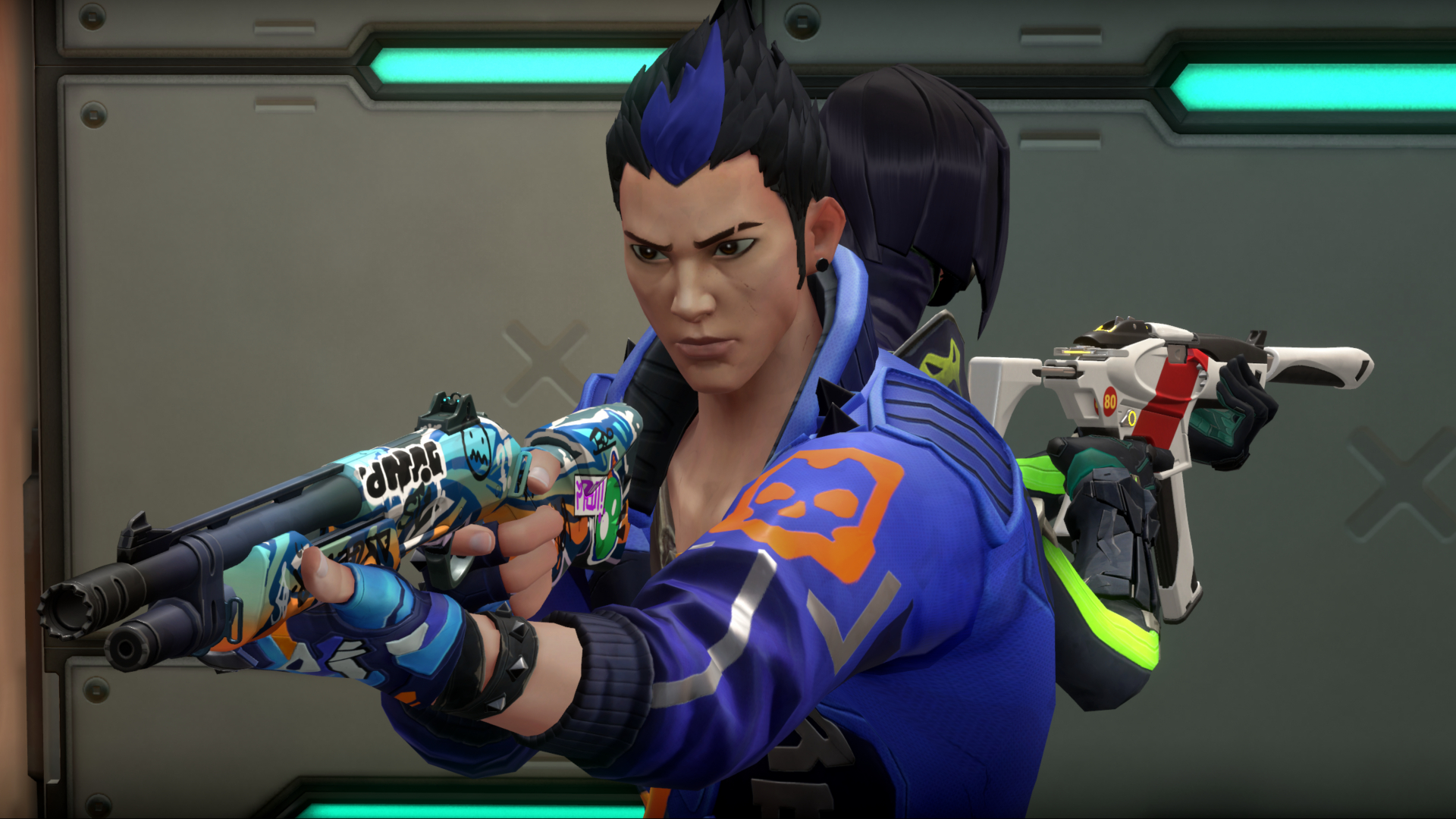
"We don't think about these things as gun skins, we think about them as experiences," continues Khanolkar. "And we also want you to feel like when you buy it… obviously the game is free-to-play, so you shouldn't have to buy gun skins. It has no competitive advantage. It's completely optional. And for the people who do spend, it's so that everyone else who doesn't want to spend, doesn't have to. You can be the best player of Valorant in the world and not have to buy a single skin.
"So for us it's like, if you choose to spend, you should feel like you're getting your money's worth. And that's been I think the reason we put so much care into all the stuff we make. Even the battle pass skins, those are $10 for 13 of them, but you should feel like there's value, there is somebody on the other end who cares and has put a lot of work into the thing they're making. We need to show you that there's value behind the things we've made.
"I call them experiences because it's the complete package and if we think about how everything comes together, like I use the example of Singularity, you have this blackhole finisher, the muzzle flash is a blackhole, the sounds are very otherworldly, the design is otherworldly. There's a lot of thought and care from these artists working together to make this feel like a complete package, not people working in isolation. It should all come together and for a player they're not going to appreciate every little bit, because they're not supposed to. They're supposed to just see it and say 'does this have value? Do I want this?'"
Sean Marino takes over and continues: "We did look at what other games did with their loot and what they do with their cosmetics and all that kind of stuff. For us it didn't feel genuine or appealing in some ways. Like Overwatch, a lot of the initial thought of what skins could be, I had an idea of 'oh this is what Overwatch did'. They had their cobalt and their titanium and just very simple things. And you have to ask yourself, if that's exciting to get and more often than not, it isn't and then ask, would I pay for that, and more often than not, I wouldn't."
Marino talks about how other games like Overwatch use levels of loot in rarity and in surveys people really just want the high tier stuff. People preferred to feel they were getting value for their money, according to Riot's researchers, and this is what informed a lot of the skin decisions when building Valorant's skins.
Are skins worth it then? I hate to say it but yeah, they probably are. They are hugely expensive and once bought, only hold value in your account and your head, but seeing those animations, swapping your gun with others on the team to try out their Reaver skin or Prime skin is part of Valorant's comradery. It also adds the satisfaction of losing your gun to the enemy team and retrieving it back once you've beaten them. A rare situation but still something I've giggled about when playing.
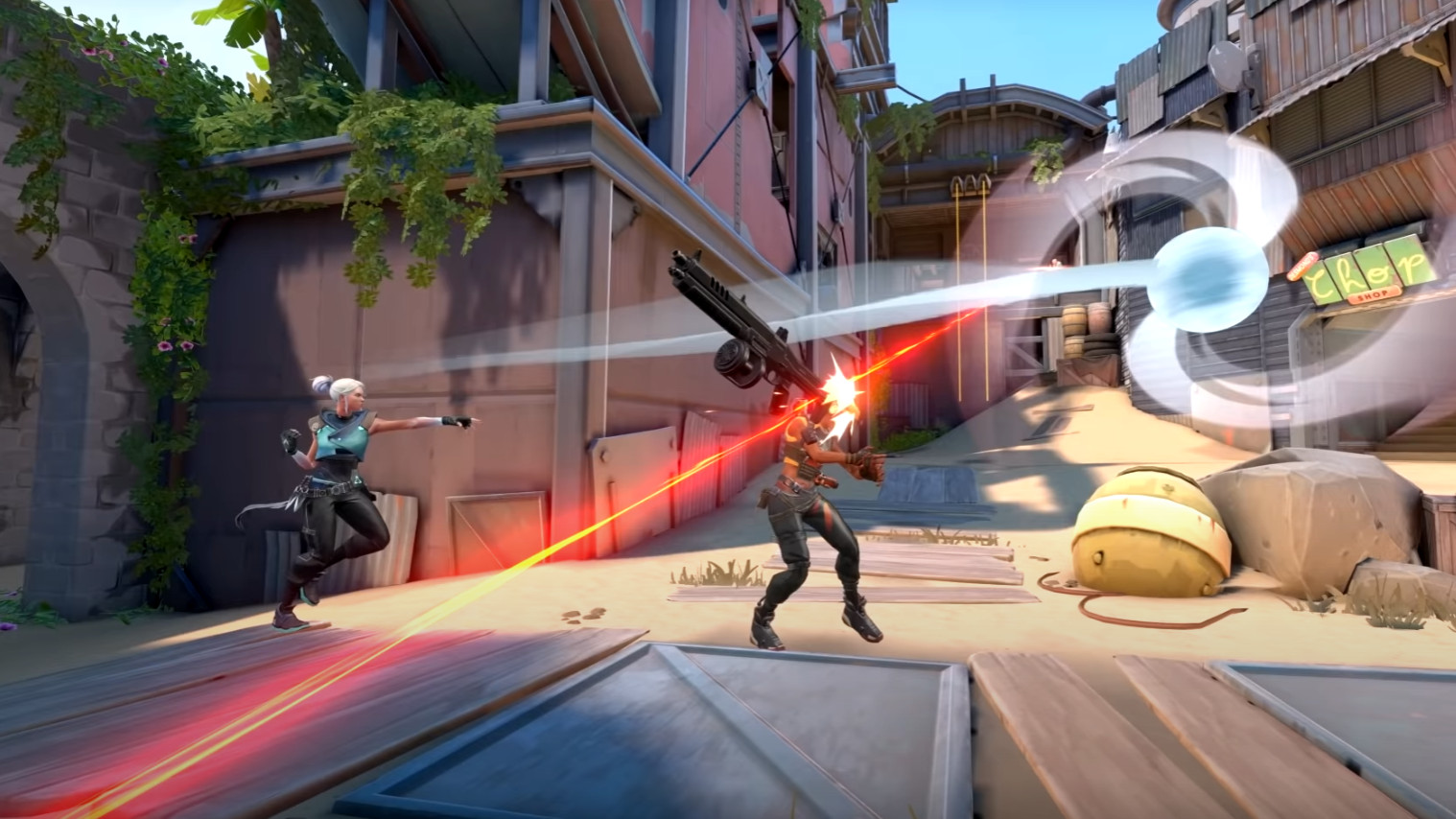
The money is steep, there is no denying. And I cringe when I see people continue to buy these skins over and over. But that steepness does mean I've rarely heard friends complain about their skin purchases because they think long and hard about whether they're going to drop that cash on a virtual object. I say all this from the perspective of an adult rather than a teenager or even child playing. For them, I can't imagine convincing a parent to spend anywhere near that much on a free-to-play game, but at least the battle pass may be a more feasible substitute.
Maps
The Valorant scene also revolves around maps. As gorgeous as they are, they can cause a polemical reaction from the community. Players will actively dodge (refuse to pick an agent) on some maps because their preferred choice doesn't work well on it, or they just hate the map itself. Breeze and Fracture are probably the least liked maps at the moment and with only six maps actively in the game, it means players have to face them more than they might like. Again a small issue in the grand scheme of things but something players undoubtedly mention as a frustration.
Are there cheaters?
And speaking of frustration, cheating has to be mentioned. There are cheaters in Valorant, there's no doubt. They're not obviously pervasive but every fan seems to have their own idea of how many cheaters there actually are in the game. After the game's original release the Vanguard anti-cheat system was heavily criticised for its effect on systems, but Riot kept up appearances by saying it was essential for the top tier prevention. Now, they've admitted that cheaters will probably always exist in Valorant, but cheating, as of later 2021, was at an all time low. As a regular player, I've not felt like cheating has only affected my games a handful of times. More prevalent are complaints of smurfs making low ELO games incredibly hard.
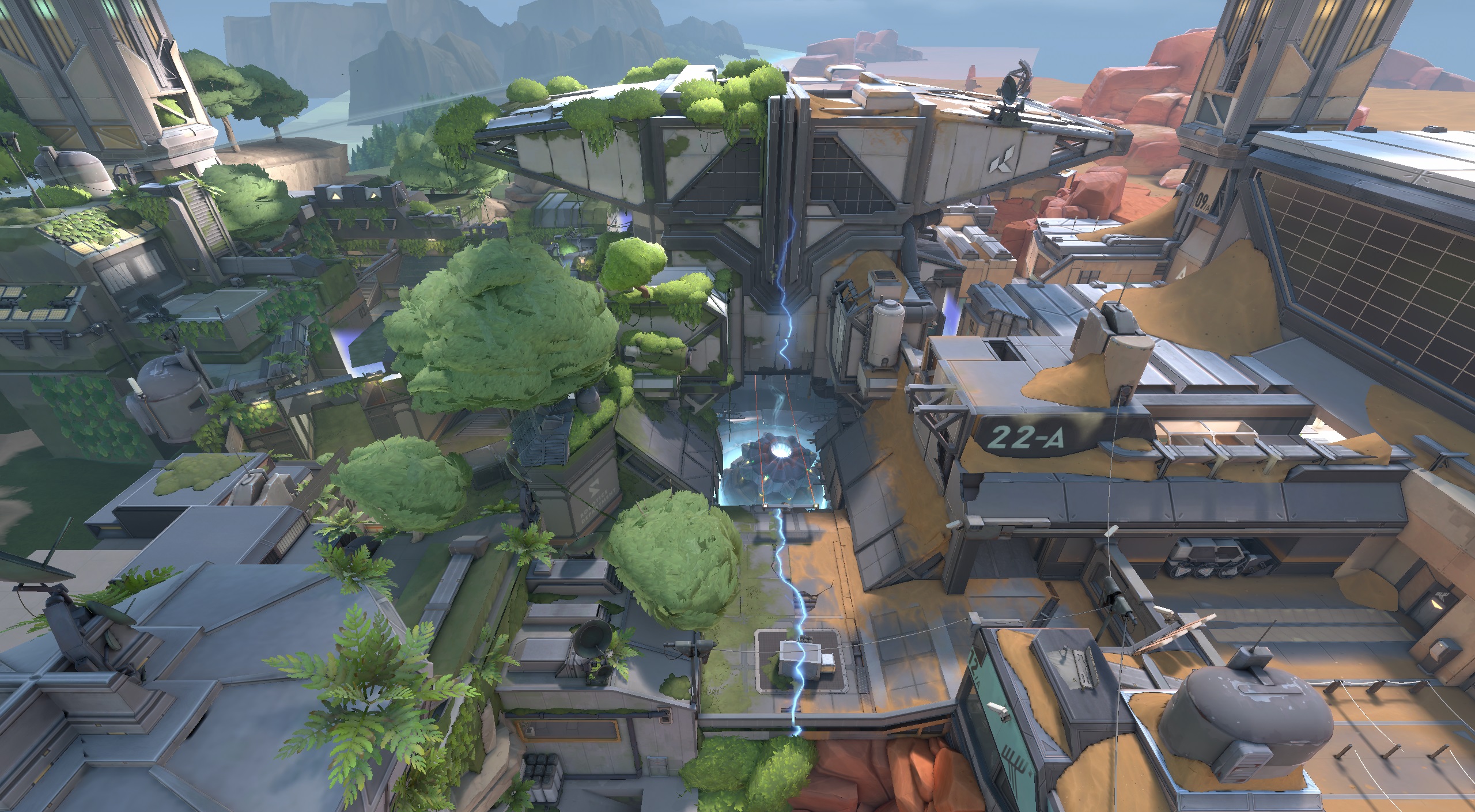
And unlike many competitive games there isn't a playback feature in Valorant at all. You can't see things from other perspectives, and unless you're recording the game yourself, there is no way to watch the match back. Players can't spot cheaters easily and find it hard to report on what they only suspect is strange gameplay. League of Legends and CS:GO both have replay functions but Valorant is yet to add one, or even indicate it would want to.
How's the esports scene?
The esports scene of Valorant is huge, bigger than I think people even realise at first glance because the pandemic has prevented a large-scale physical event so far. The VCT 2022: Stage 1 Masters in Reykjavík, which happened at the end of April, had a peak viewership of 1.07 million viewers according to Esports Charts. CS:GO's IEM peak viewership was 1.12 million as a comparison, even with its years of prevalence. It's up there with the biggest and the best, but what else do you expect from Riot Games right? They don't enter a huge game genre without expecting to dominate it like with League of Legends.
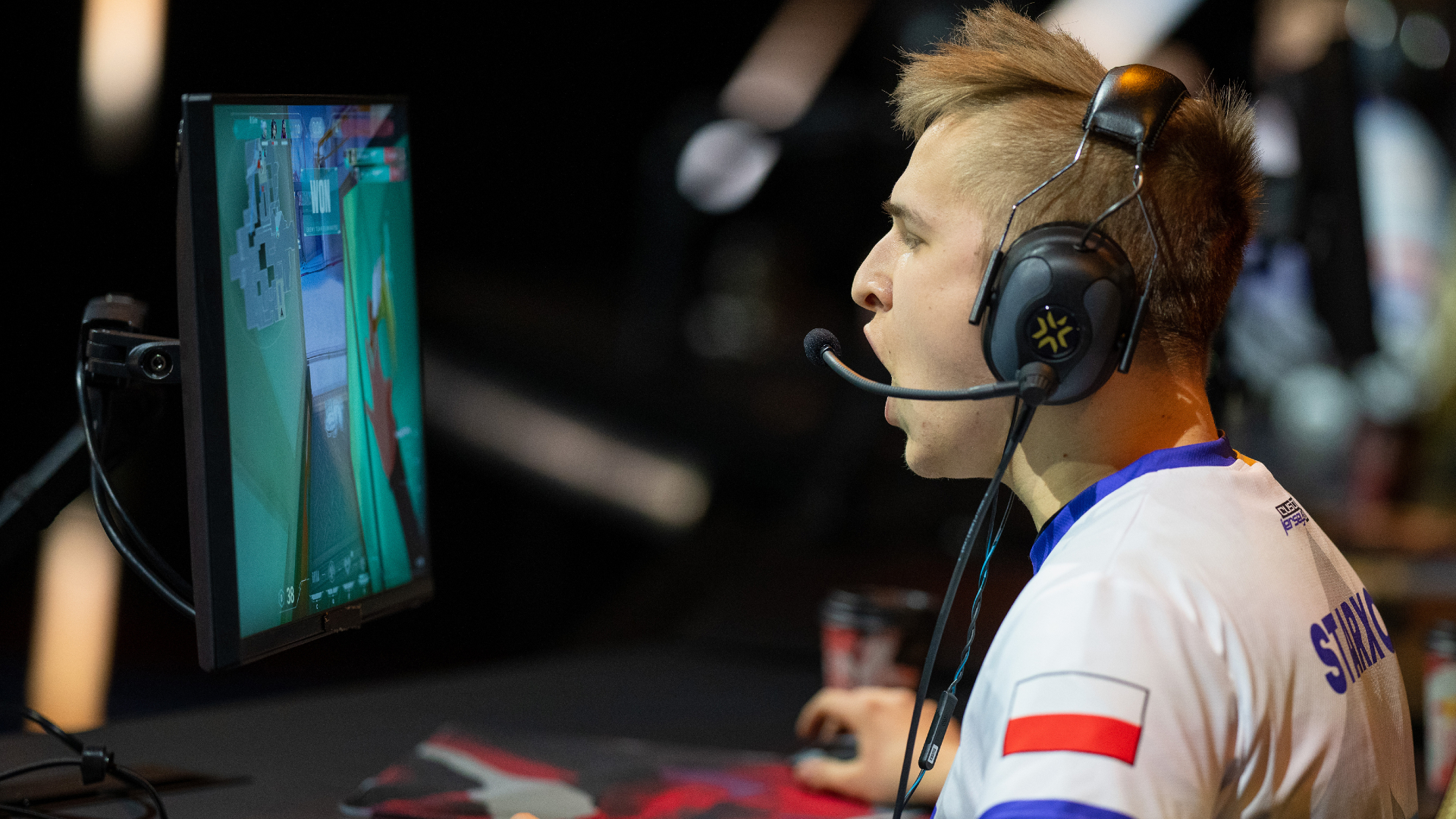
So what does Valorant have to look forward to? Well currently, in almost every aspect the game is thriving. Its community has no issue holding the game and its developers accountable for the actual issues the game is facing but celebrating the game as a whole in equal measure. There are long-term frustrations the community have but, both players and developers seem aware at all times of what needs to be done to continue supporting the game's competitive and casual scenes.
There is always something changing or updating or developing about Valorant. It's a constant conversation and that feels very different to its major influences, Overwatch and CS: GO and even Call of Duty Warzone. Dedicated players always have something new to think about, complain about, or compliment about Valorant and that's what's made it the success it continues to be, and will almost certainly be for years to come.
Imogen has been playing games for as long as she can remember but finally decided games were her passion when she got her hands on Portal 2. Ever since then she’s bounced between hero shooters, RPGs, and indies looking for her next fixation, searching for great puzzles or a sniper build to master. When she’s not working for PC Gamer, she’s entertaining her community live on Twitch, hosting an event like GDC, or in a field shooting her Olympic recurve bow.

